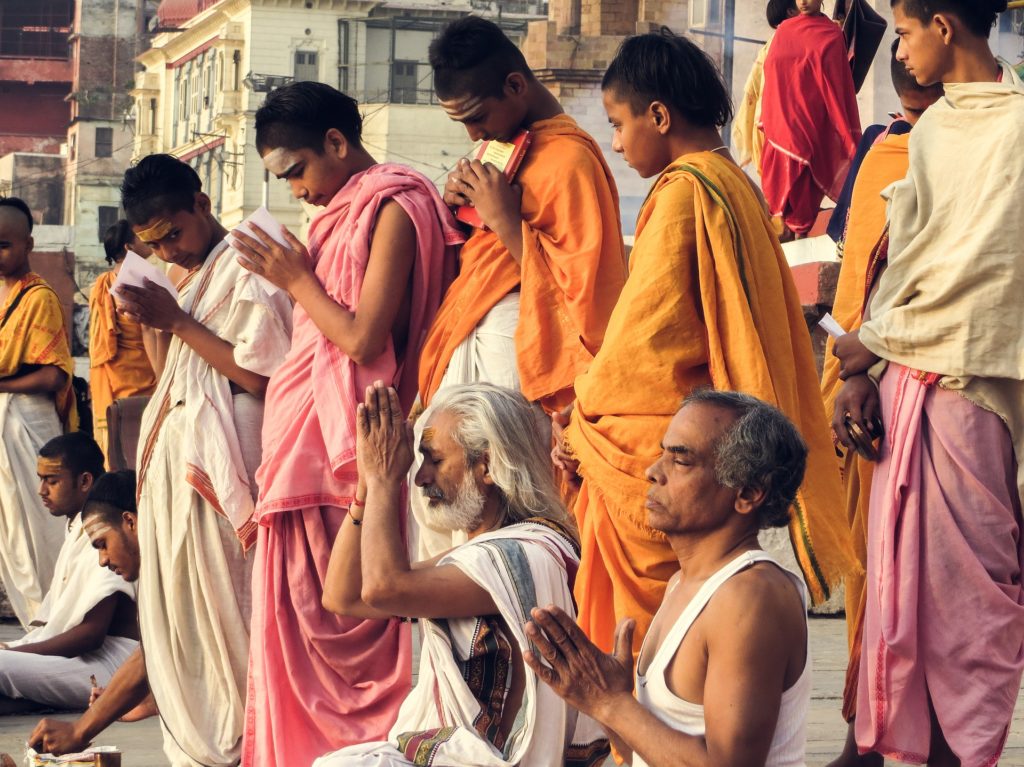
The term ‘Sanatana Dharma’ is often associated with a particular sect or religion, but we rarely take the time to comprehend its true meaning. While ‘Dharma’ is commonly interpreted as ‘duty’, ‘religion’, or ‘religious duty’, its meaning goes beyond these concise English translations. The root of the Sanskrit word ‘Dharma’ is ‘dhri’, which means ‘to sustain’, and it also implies that which is essential and fundamental to something. ‘Sanatana’ means ‘eternal’, and the phrase ‘Sanatana Dharma’ refers to what is perpetually integral to a living entity. It is timeless, not confined by any boundaries, and not limited to any particular sect. Unlike faith, which can change, ‘Sanatana Dharma’ (commonly referred to as ‘Hinduism’ today) is unchangeable and eternal.
Hinduism and Sanatana Dharma
The terms ‘Hinduism’ and ‘Sanatana Dharma’ are frequently used interchangeably in contemporary times. Nonetheless, let us delve into the genesis of these designations. The naming of the people and their religion as Hindu and Hinduism, respectively, is commonly attributed to the Persians who invaded India during the 6th century B.C. and mistakenly pronounced the S in Sindhu as H. As a result, the term Hindu became a misnomer since it does not represent the diverse range of schools of thought and beliefs encompassed within the religion. Dr. Radhakrishnan has noted that the name Hindu was derived from the fact that the original founders and earliest followers of the civilization inhabited the region drained by the Sindhu river system, as recorded in the oldest Veda, the Rig Veda. This suggests that Hinduism is not a religion or theocracy, but a geographical name for a people, which could include various communities, rites, and gods.

Therefore, the term Hinduism does not accurately represent the Vedic system, and some followers of Sanatana dharma or Vedic culture choose not to use the name Hindu to describe their spiritual path. Instead, the Sanskrit term Sanatana dharma is a more appropriate term since it reflects the timeless, universal principles that are the foundation of the Vedic way of life. The Vedic system, based on Sanatana dharma, accommodates diverse communities, rituals, and practices, making it a comprehensive spiritual path that embraces all beings.
Meaning of Sanatana Dharma (Hinduism) – Introduction
Sanatana Dharma refers to the eternal nature or characteristics (svabhava) of an entity (Vastu). Every entity is created with an original fundamental nature that accompanies it throughout its existence. However, due to various circumstances, an entity may acquire a changed or acquired nature (naimittika dharma) over time, which becomes firmly established and coexists with its original eternal nature (Sanatana Dharma). It’s important to note that the acquired nature should not be mistaken as the original nature of the entity, and such changed characteristics are called ‘nisarga’.
For instance, water is an entity, and its eternal nature (Sanatana Dharma) is liquidity. But when water freezes into solid ice, its liquidity is no longer apparent, and instead, the solidity of ice becomes its acquired characteristics (naimittika dharma). Nevertheless, the acquired nature is never permanent and arises due to temporary circumstances. As soon as the circumstance changes, the entity regains its original nature. In our example, the solid ice changes back into liquid water once the freezing conditions are eliminated.
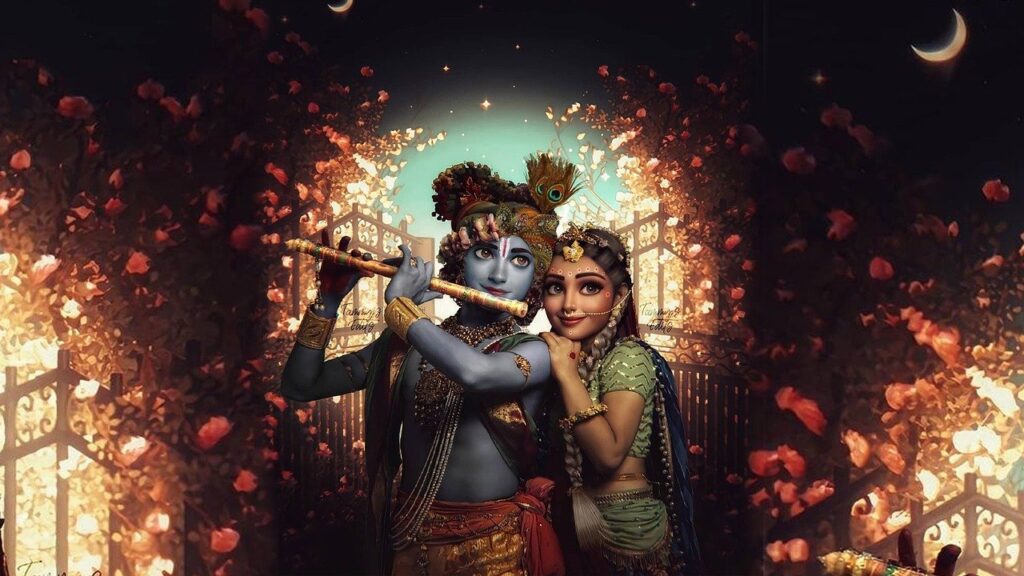
In the case of living entities, the term ‘living being’ refers to all spirit souls that are embodied in different species of life. Dharma is a characteristic of the soul that remains independent of the type of body in which it resides. The original nature or Sanatana Dharma of the soul is eternal and prevails, even if the soul acquires a modified nature (naimittika dharma). Although the original nature may lie dormant for some time, it will manifest itself openly when the conditions are favorable.
Religion vs Sanatana Dharma
Religion typically implies faith, which may vary from one person to another. However, Sanatana Dharma stands apart in that it is immutable and cannot be altered. For example, just as water cannot lose its liquidity and fire cannot lose its heat, the Sanatana Dharma of a living entity is unalterable. It is an inherent characteristic that remains constant regardless of external circumstances. Unlike faith, which may vary depending on personal beliefs or cultural influences, Sanatana Dharma is not subject to alteration or manipulation. It is an integral aspect of an entity’s existence and cannot be separated from its identity. This unchanging quality of Sanatana Dharma is what makes it a universal concept that can be applied to all living beings, regardless of their religious affiliation or cultural background. When we talk about the Sanatana Dharma of a living being, it signifies the inherent quality that is not influenced by any external factor such as birth, death, or rebirth. This is because the Sanatana Dharma of a soul is an inseparable part of its original nature and is not subject to change or destruction. Therefore, even when the soul is embodied in different physical bodies, its Sanatana Dharma remains constant.
Sanatana Dharma of Man
According to Sanatana Dharma, the eternal nature of living beings, including humans, is to perform service, or “seva.” This is a universal law that is beyond our belief systems. When we observe the world closely, we can see that every individual is engaged in serving others in some way or the other. A father serves his son, a son serves his father, a wife serves her husband, a doctor serves his patients, and a king serves his subjects. Even those who have no one to serve keep pets and take care of them. This is because the soul is inherently a servant and serving is a natural trait of the soul, as stated by Sanatana Dharma. Therefore, all of us are bound to serve in one way or another. The Vedic scriptures, which are the oldest in the world, provide insight on this subject and conclude that man achieves perfection only when he serves the Supreme Lord. This service attitude is built on a foundation of loving relationship and is not based on obligation. The purpose of our existence is to render loving devotional service unto the Supreme Lord, recognizing Him as our eternal object of love.
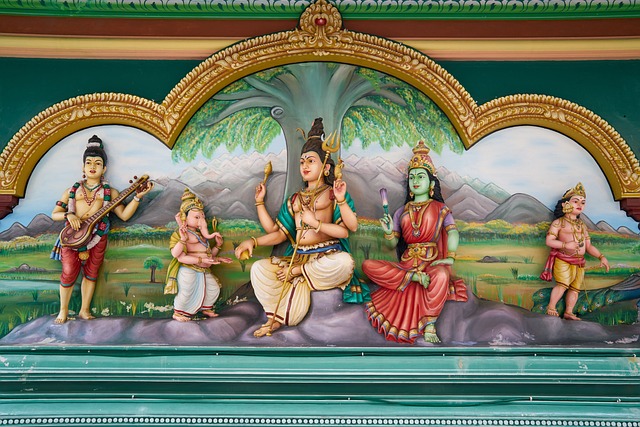
Humans are the most conscious of all species and are perfectly equipped to attain complete spiritual realization. Faith in God is universal and natural for people in general, including even uncivilized tribes who worship nature. Living beings, including humans, are spirit souls that are part and parcel of the Supreme Lord. The soul is eternal and goes through a process of transmigration from one body to the next in a quest for perfection. The soul attains perfection when it rekindles its lost relationship with the Supreme.
Yoga is often misconceived as a mere set of physical exercises, however, it is a gradual and transformative process of connecting the soul with the Supersoul, ultimately leading to the perfection of one’s existence. According to the Bhagavad Gita, Sri Krishna explains that the highest form of yoga is achieved by a devotee who has unwavering faith in the Supreme Lord, and constantly meditates on Him within their own heart, while offering loving and transcendental service. Sri Krishna proclaims that this devotee is the most intimately united with Him in yoga and the highest of all yogis.
Yoginaam api sarvesam mad gatenantar atmana
Sradhavan bhajate yo mam, sa me yuktatamo matah
(BG 6.47)
In Bhagavad Gita, Sri Krishna thus affirms that offering transcendental love and service to Him is the ultimate truth and the supreme means to attain perfection in one’s life.
Goals of Sanatana Dharma
The Vedic process has both long-term and short-term goals. The ultimate long-term goal is moksha, or liberation from the cycle of birth and death, which is achieved by realizing one’s spiritual identity and becoming free from material and sensual desires. This is accomplished through various processes, such as Jnana, Vijnana, Hatha-yoga, Yoga, and Bhakti. These different approaches are not only compatible with each other but also complimentary. The short-term goal is to find happiness by understanding one’s spiritual identity and becoming free from day-to-day turmoil and hassles. Real happiness, which exists on the spiritual platform, is always steady and continually increasing according to one’s spiritual advancement. Those who understand their spiritual identity and are self-satisfied and content within themselves find happiness everywhere.
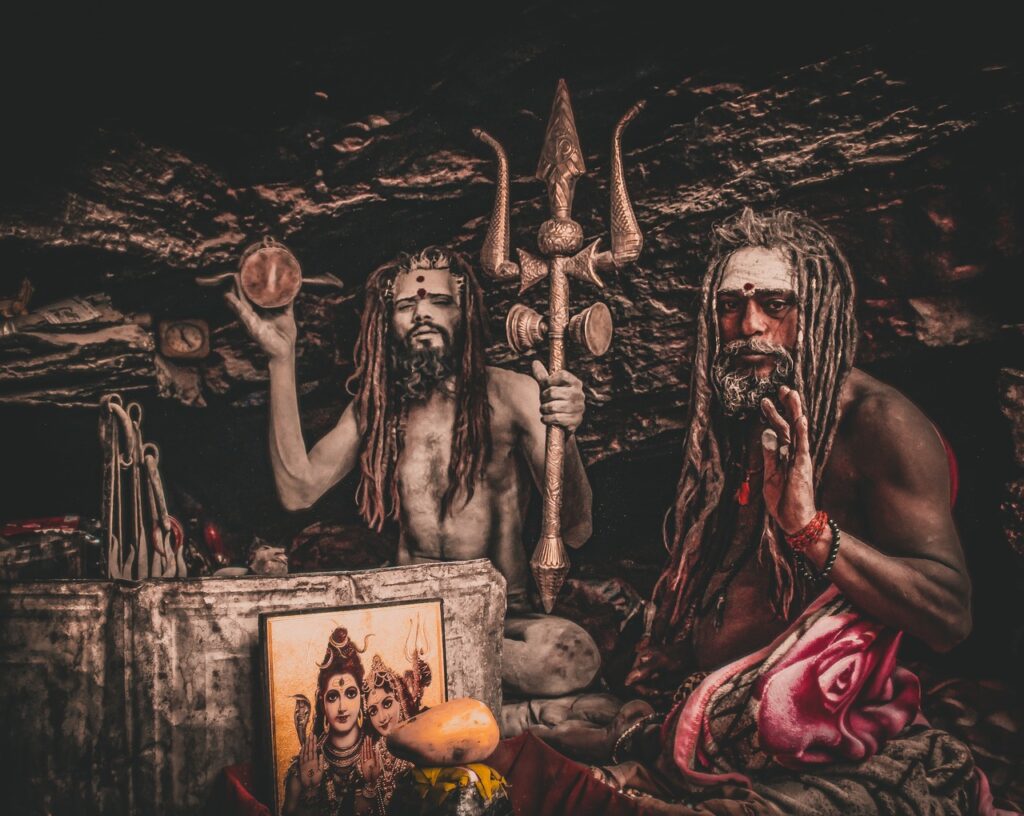
The Vedic philosophy of salvation or liberation is different from that of other religions, as it means realizing that one is the immortal self and not the perishable body. This realization is the means of rising above the illusion that keeps us from being free. Hinduism takes it for granted that there is more than one approach to understanding different levels of spiritual truth and attaining salvation. The living being’s spiritual form is sac-cid-ananda, eternal, full of knowledge, and full of bliss, and is never limited by the body or one’s situation.
Sacred Texts of Sanatana Dharma (Hinduism)
In general, those who adhere to the principles prescribed in the Vedas and their related texts are referred to as Hindus or ” Sanatana Dharmis”. The term ‘Veda’ denotes knowledge, and these ancient scriptures are believed to have been divinely revealed. They are considered to be a desire tree, containing all possible knowledge accessible to humans, and encompass a wide range of topics, from the worldly to the spiritual. The religious texts of Hinduism can be classified into two main categories: Shruti, which means “that which is heard” and is considered to be authoritative, eternal, and a revelation of undeniable truth; and Smriti, which means “that which is remembered” and is considered to be supplementary to Shruti. Shruti includes the four Vedas, Upanishads, and other sacred texts, while Smriti includes Itihasas, Puranas, and other related texts. Below are the principal Vedic Texts –
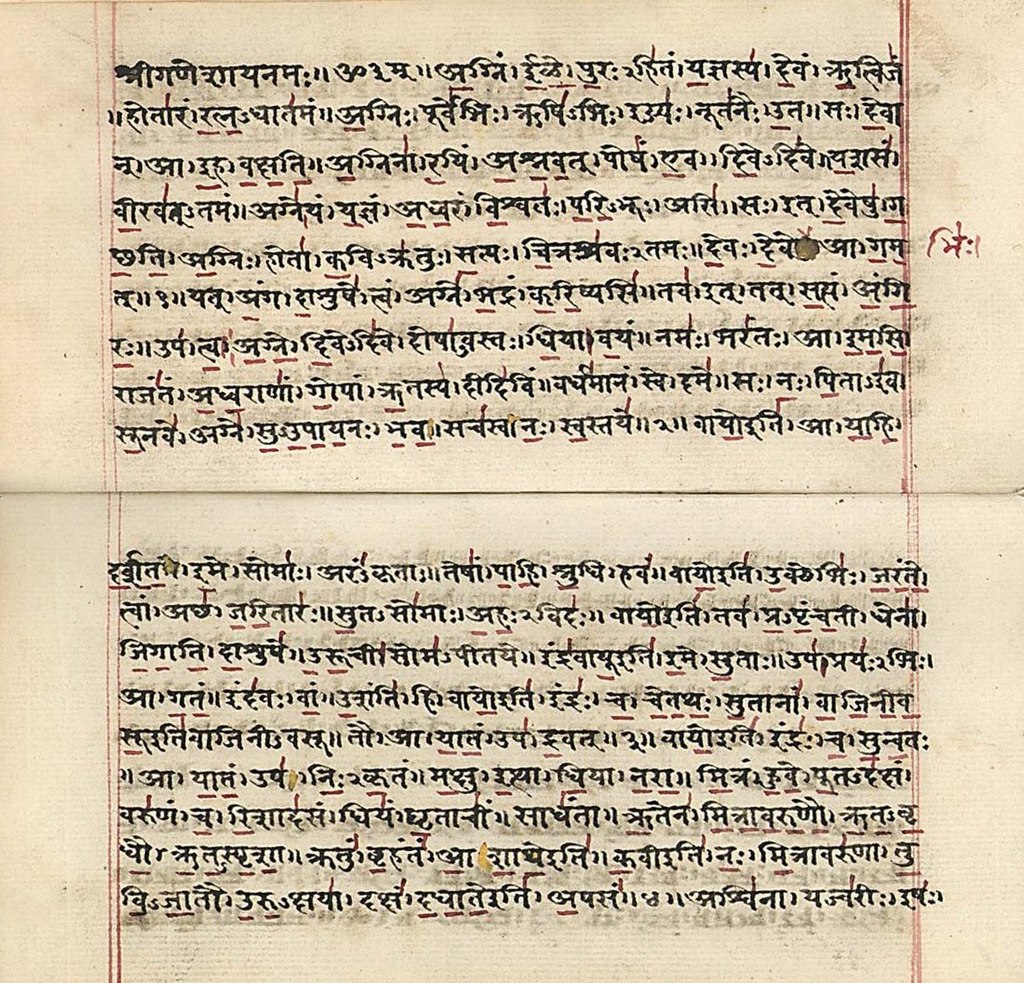
#1 The Four Vedas – The Rig Veda, Sama Veda, and Yajur Veda are collectively known as Vedatrayi. Atharva Veda is considered a later addition. Bharat Muni’s Natya Shastra is deemed to be the fifth Veda. The Rig Veda is the oldest among all the other Vedas.
Rig veda – It is the oldest of the Vedas and is divided into ten books (mandalas) and has 1028 hymns praising the various deities. These include Agni, Vishnu, Rudra, Varuna, and other early Vedic gods. It also contains the famous ‘Gayatri mantra’ and the ‘Purusha Shukta’ prayer (10.7.90.1-16).
Yajur Veda – A priestly handbook for use in the performance of yajnas (sacrifices).
Sama Veda – This consists of chants and melodies to be sung during worship and the performance of yajna.
Atharva Veda – Contains hymns, mantras, and chants, largely outside the scope of yajna.
#2 108 Upanishads – The term ‘Upanishad’ means an intimate session between the teacher and the taught. The Upanishads contain the philosophical essence of the Vedas and are therefore called Vedanta. ‘Veda’ means knowledge, and ‘anta’ means the end. In other words, proper understanding of the ultimate meaning of the Vedas is called Vedanta knowledge. Among the 108 Upanishads, the below are considered topmost :
- Isa
- Kena
- katha
- Prasna
- Mundaka
- Mandukya
- Taittiriya
- Aitareya
- Chandogya
- Brihad-aranyaka
- Svetasvatara
#3 Vedanta Sutra – The Vedanta Sutras (also called the Brahma Sutras) are composed by sage Vyasa to systematize the teachings of the Upanishads. There are a total of 550 aphorisms divided between four chapters.
#4 Itihasas (epics) – Comprises two epics : Ramayana (composed by sage Valmiki) and Mahabharata (composed by Veda Vyasa). Mahabharata also includes the all popular Bhagavad Gita.
#5 Bhagavad Gita – Instructions spoken by Lord Krishna to Arjuna, the great warrior, on the battlefield of Kurukshetra. These instructions on life and spirituality are enlightening and can deliver one from the ocean of material existence.
#6 Puranas (history) – Puranas are compiled from related historical facts which explain the teachings of the four Vedas. There are primarily 18 Puranas –
- Vishnu Purana
- Naradiya Purana
- Padma Purana
- Garuda Purana
- Varaha Purana
- Bhagavata Purana
- Matsya Purana
- Kurma Purana
- Linga Purana
- Shiva Purana
- Skanda Purana
- Agni Purana
- Brahmanda Purana
- Brahma Vaivarta Purana
- Markandeya Purana
- Bhavishya Purana
- Vamana Purana
- Brahma Purana
#7 Dharma Shastra (law books) – The Dharma Shastras include the law codes of Sanatana Dharma. They deal with three main subjects: codes of conduct, civil and criminal law, and punishment and atonement. The most important of them is Manu Smriti (or Manu Samhita), which is still consulted in Indian law. It was written by Manu, an administrative demigod (the “ruler of mankind”) and the first law-giver. The word “man” is said to derive from Manu. Closely related is the ArthaShastra, a text that delves into the science of acquiring wealth and power.
#8 Vedangas – auxiliary science related with Vedic study such as astronomy, astrology and phonetics.
#9 Upavedas – These are sciences not directly related to Vedic study. They are : Dhanurveda (deals with the art of warfare), Gandharvaveda (deals with the music), Silpaveda (deals with art and architecture) and Ayurveda (deals with medicine).
#10 Sectarian texts (e.g. agamas, tantras) – deals with ritualistic practices, and includes the Vaishnava Pancharatra, Shaiva Agamas and Tantras, and the Shakta Devi Shastra.
#11 Vernacular literature – Many subsidiary vedic texts, particularly during the medieval period, are written in local vernaculars such as Bengali, Tamil, Brijbasi, Gujarati, etc